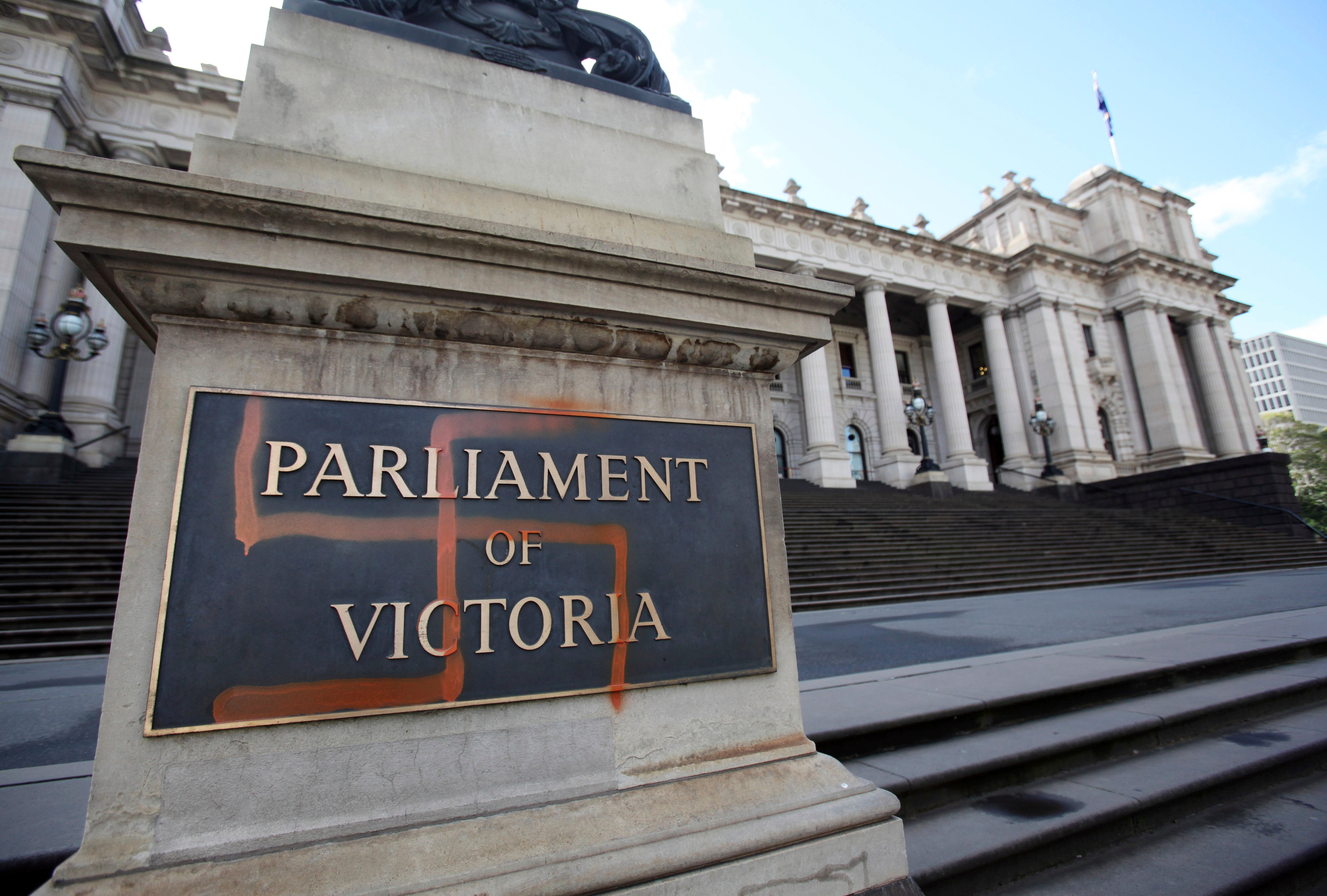2nd Australian state bans public displays of Nazi swastikas
A second Australian state has banned public displays of Nazi symbols

Your support helps us to tell the story
From reproductive rights to climate change to Big Tech, The Independent is on the ground when the story is developing. Whether it's investigating the financials of Elon Musk's pro-Trump PAC or producing our latest documentary, 'The A Word', which shines a light on the American women fighting for reproductive rights, we know how important it is to parse out the facts from the messaging.
At such a critical moment in US history, we need reporters on the ground. Your donation allows us to keep sending journalists to speak to both sides of the story.
The Independent is trusted by Americans across the entire political spectrum. And unlike many other quality news outlets, we choose not to lock Americans out of our reporting and analysis with paywalls. We believe quality journalism should be available to everyone, paid for by those who can afford it.
Your support makes all the difference.A second Australian state on Thursday banned public displays of Nazi symbols.
New South Wales, the nation’s most populous state, followed Victoria, the second most populous, which banned the public display of Nazi swastikas in June.
The law was passed with the unanimous support of the state parliament’s upper chamber. The lower chamber passed the bill on Tuesday.
Queensland and Tasmania states have foreshadowed similar laws, which would mean half of Australia’s eight states and territories and most of the Australian population were banned from displaying Nazi symbols.
New South Wales Jewish Board of Deputies chief executive Darren Bark described the passing of the law as a historic day for the state.
“Nazi symbols are a gateway to violence and are used as a recruitment tool by extremists,” Bark said.
“Banning their display is a long-overdue and much-needed law in our state. The perpetrators will finally be held to account,” he added.
The law allows for the swastika to be used in academic, historical or educational settings, thereby paving the way for its display by Hindus, Buddhists and Jains for whom it holds religious significance.
“For too long, the Hindu community has not felt comfortable to display our symbol of peace because it resembled a symbol of evil. This is no longer,” Hindu Council of Australia national vice-president Surinder Jain said.